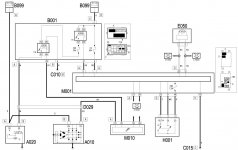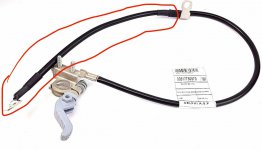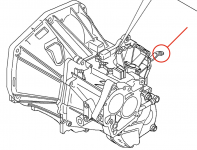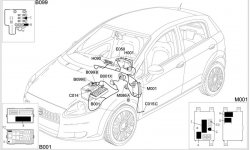I had a quick read of this thread before setting off for the dentist earlier this morning. Sitting in the reception - he was running late - I distracted myself by thinking about what I'd read.
So what do we have? The battery was reading 12.2 volts when you first checked it? This would not indicate that it was fully charged but it's not screaming "dud battery" to me yet. I just returned home and took voltage readings on both our vehicles - The Panda hasn't been running for about 3 days and the Ibiza was last run yesterday afternoon so there's been plenty of time for any surface charges on plates to become dispersed. The Panda reads 12.14 volt and the Ibiza 12.12 volts. Both engines crank over really fast and start easily.
You say that you successfully jump started the car and that you then recorded battery voltage at around 14 volts? this would seem to indicate that your alternator is charging and regulating as it should.
After charging with a battery charger for 12 hours battery voltage was recorded at 12.6 volts? On the face of it this would seem to indicate that the battery is accepting charge but I would urge caution in that a partly sulphated battery can give good readings like this when charged but still not have sufficient capacity (due to the blocked parts of the plates) to start an engine.
What you haven't done yet, I think, is to apply a heavy discharge to the battery whilst monitoring it's voltage? There's nothing like "stressing" a battery to assess it's health! In the garage we had a dirty great heavy discharge tester which was used across the battery terminals to haul in excess of 100 amps out of it whilst recording the voltage at the same time. Most of us don't have one of them - I don't - but you do have a starter motor which is going to subject the battery to similar stress. So what you want to do is firstly charge the battery up. You seem to have a battery that's accepting some charge? so put it back on that charger and leave it there maybe overnight. Then connect your volt meter across the battery terminals - very important to connect to the posts themselves and not just the clamps - then try to crank the engine. What's the voltage showing? If the voltage drops markedly, maybe to 10 volts or even less, you've got a flat or "Dud" battery and almost certainly need a new one. If the voltage doesn't drop noticeably then it means the starter isn't drawing current for some reason. Could be the solenoid or starter itself, (you say the solenoid seems to "click" so probably there is energizing current being applied to the solenoid windings (that's the small wire on the starter) so I would guess there is nothing wrong with the ignition switch or the wires from it. It could well be a poor connection on the main power lead from the battery positive to the heavy connector on the starter or connections on the heavy earth leads. You would need to remove them and clean up with wire brush &/or emery cloth before reassembling with some vaseline or grease to stop future problems. You can easily check this one out by using a jump lead in parallel with the suspect lead to eliminate it but remember to apply the lead directly to the battery post and to the body/engine block or, where the positive terminal is concerned, to the battery post and starter terminal itself. No use connecting the crocodile clamp of the jump lead to the battery clamp as you are not then checking the continuity between the clamp and post! Be very careful what you're doing when you're connected to the battery positive though - touching almost anything metal except the terminal on the starter, so, body parts, engine block, gearbox casing, etc, etc will cause spectacular fireworks and could ruin your battery through direct shorting or burn out an ecu and you could injure yourself into the bargain so don't try it unless you know what you're doing. Testing the neg side is pretty risk free (unless you short it to the pos terminal of course!)
With this last recommendation very much in mind, it interests me that you say you jump started it - By so doing you've just proved the starter motor and most of it's associated wiring is OK - So how did you apply the jump start lead clamps? Did you grip the two battery terminal clamps? If so you've just successfully diagnosed that you have a high resistance between a battery post and one, or maybe both, of those clamps! It will need cleaned up. Good to be aware it might be a poor connection between the cable itself and the clamp, not just the more usual problem of a poor connection between the post and clamp. It's good practice to make your jump connections from the pos on the good battery to the pos on the suspect battery and then the neg on the good battery to the engine block or other solid metal earthing point (for instance gearbox etc) so as to avoid the possibility of a spark near the battery when the circuit is completed. If you connected up in this way you might also suspect the connection between the earth cable and it's terminals where internal corrosion is a not unknown possibility.
So, first off, do that voltage check under heavy discharge. You'll be in a much better place to continue when you have that result under your belt.
Good luck. Do let us know how it turns out won't you? Diagnosing things like this sitting on my sofa is all very well but can't compare with actual hands on. Jock.
Thanks Jock, I have been reading elsewhere about the importance of doing a voltage drop test. Previously I had only tested resistence in various parts of the circuit. I have a brand new battery, so seems to be functioning well as it doesn't lose noticable voltage on cranking. I didn't test the old one under load, only the resting voltage which was low so my replacement of it probably wasn't necessary. It'll serve as a backup in any case, or for some other application

I haven't got under the car yet, so haven't taken any readings from the starter motor terminals. I've started at the top, and will work downwards. I am not getting any noteworthy voltage drop from from the positive battery post, to the clamp, nor to the positive cable that disappears down into the engine bay (presumably connects to starter as per @
Bernievarian's wiring diagram). So I think the positive side is OK, but haven't tested at the starter terminals yet so there is still a posibility of a bad connection down there.
What I have noted is 1-2V drop between the negative battery post and the earth point on the gearbox. So, thinking I am onto something, I decided to remove the earth lead that bolts to the gearbox. I hadn't done this is so far as it's a pain to get to behind the clutch slave cylinder. I got at it, and to my surprise it had come away from the crimp which attaches it to the negative battery lead.
I've attached a picture of the lead in question. It's made up of two leads crimped in the middle (hidden beneath some insulation). The gearbox lead seems to have snapped, and was perhaps hanging on by 1-3 strands of copper wire which broke when I was removing it.
The entire wire, including negative battery clamp is available from a parts website for the princely sum of £52.99. I will be replacing the broken half with a simple lead with two lugs on either end. The "official" lead has a lug mounted at a right angle, making it fit round the slave easier but I'm hoping I can manovre a straight lug in place.
The gauge of the broken ground wire is quite thick. Thicker than my local parts stores carry. It's approx 25mm², but I can only source 16mm² locally so will try that. Hopefully it'll do. Something like this:
https://www.eurocarparts.com/p/starter-solenoid-lead-12-BAR573
Once that's replaced, I'll keep testing. Hopefully replacing this will get the engine running, so I can keep testing without having a helper crank the car each time.
I've also had the check engine light pop on, so going to go use my OBD scanner to see what that is.
Hope your dentist visit wasn't too bad

Daft question, but have you checked the electrolyte levels.
Might be worth topping up and recharging before spending any money.
Typically expect to see 12.6v on a fully charged battery.
As for the alternator test, you really ought to get the engine speed up to driving speeds, maybe 2000 rpm and above to see the true output of the alternator.
I'd expect to see somewhere around 14.5v
This time of year is the true test of a battery.
Yes, 12.6v was the magic number I had in mind so when I saw my old battery was 12.2v and wouldn't start the car even after a charge, I gave up on it. Prematurely, as it seems. Both are of the "maintenance free" variety to I haven't looked at electrolyte levels or anything like that.
Hi.
Not a simple battery issue..
Assuming your meter isnt WAAY off..
The new battery being 12v.. very similar to the old one..

In my experience if its still got 6 working cells it will crank..
Ok.
So.. jumper cables get the starter spinning..
Where are you placing the cables?
( this might be overcoming : 'bypassing'..your issue)
My jump setup was:
good battery positive <---> bad battery positive
good battery negative <---> bad car's gearbox (see attached picture)
i've found the gearbox earth to be defective, so this in all likelyhood explains why the jump start worked
1. Engine idling is enough to get almost 100% from alternator, that's what regulator is for. So you
don't have to rev up.
2. One of the most common symptoms of bad regulator is significant voltage drop under load. Example (Punto 1).
Mind, that regulators are also temperature dependent (it's a function, not a bug). Cold = more, hot = less voltage.
Unfortunately the same (or similar) behavior you will get from bad wiring. So go check it too.
3. Three things are interconnected:
alternator -
starter motor -
battery. Automotive "Holy Trinity".
And cables between them. Failure of one of those elements will hurt or spoil the other two.
Most common mistake is blaming the battery (and buying new one). If it's bad, find out WHY.
Just saying.
But OK, not my business. Go buy another one!
This is interesting, as you say not needing to rev up tallies with my experience. I don't think I saw any noticiable difference in voltage at idle, or 2500rpm. I take your point about finding out why a battery has gone bad. My view was that they were quite consumable and after some initial testing, I thought I'd diagnosed the battery but turns out I had much more testing to do.
I've been aware my alternator has been sub-standard for a while. I thought that a good battery should be 12.6v so as long as the alternator is putting out 12.6v you are all good. But with all accessories turned on, my alternator isn't putting out enough so that'll put strain on my battery. I suspect if i continue blasting the heating, AC and rear screen heater without having the alternator serviced, I certainly will be looking at needing a new battery before long

Does look like a ground issue
and an alternator regulator issue though - good call






